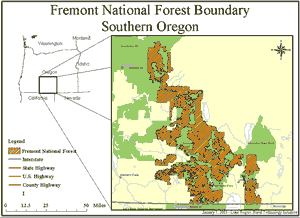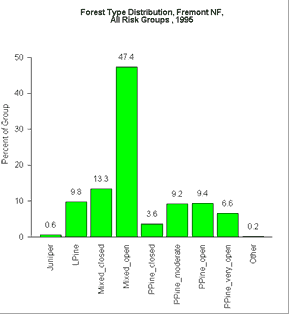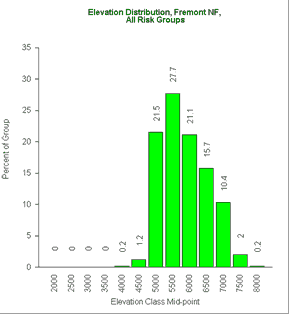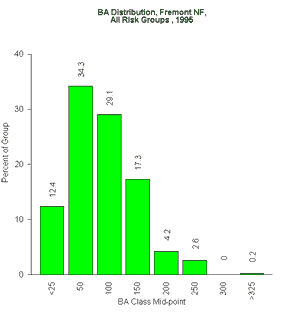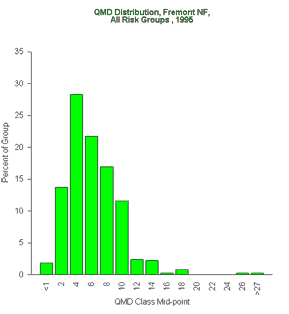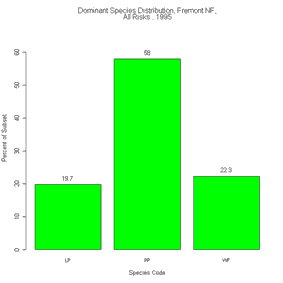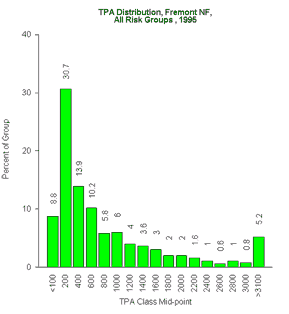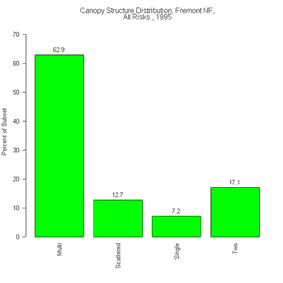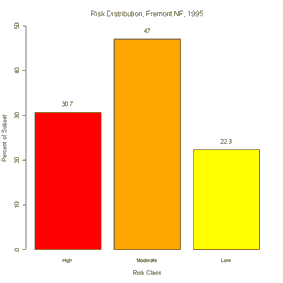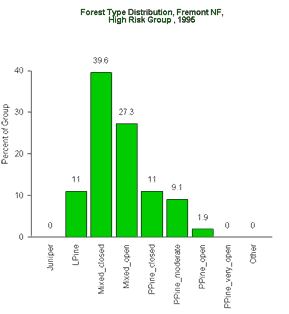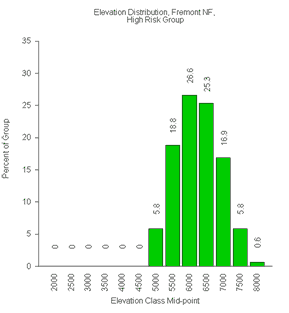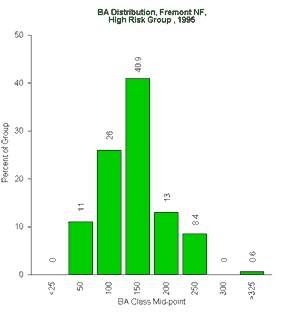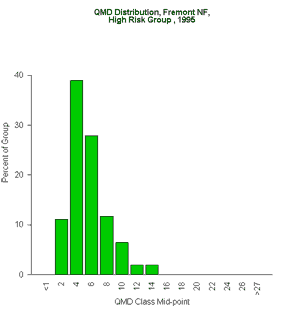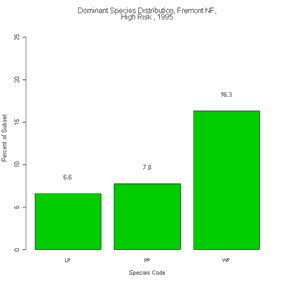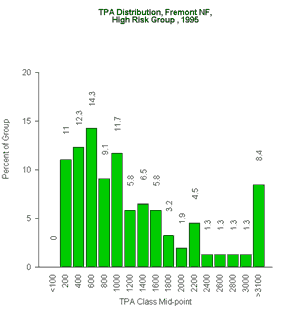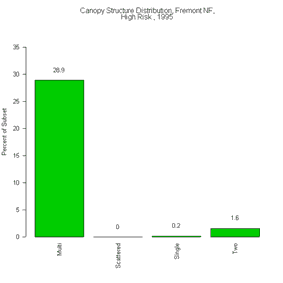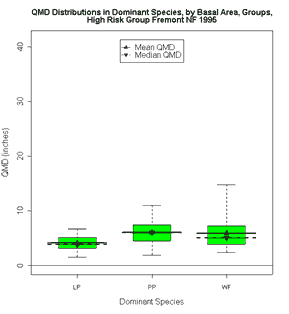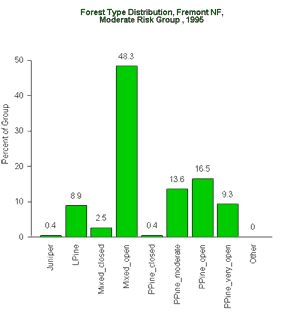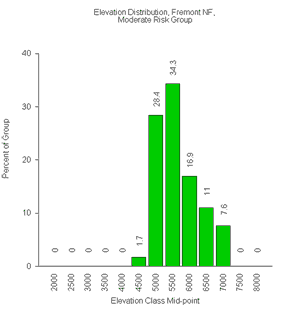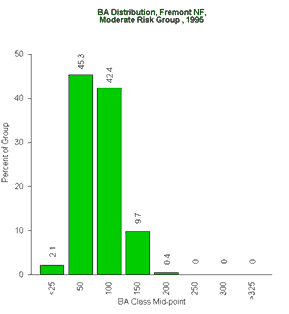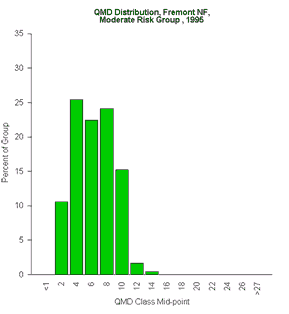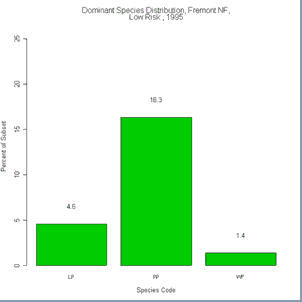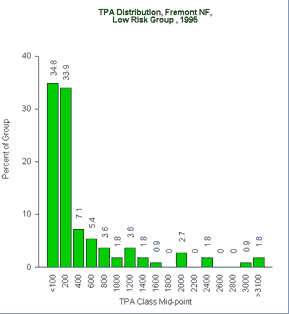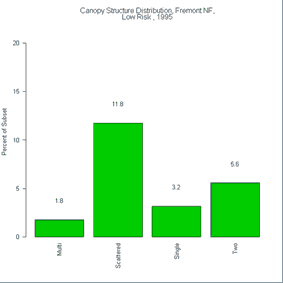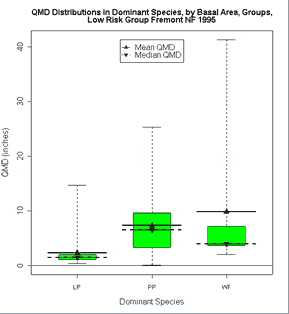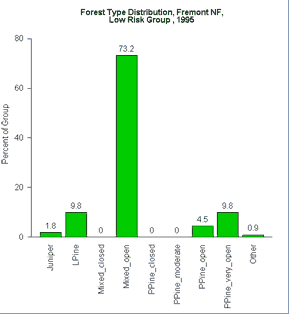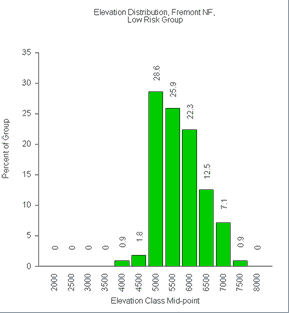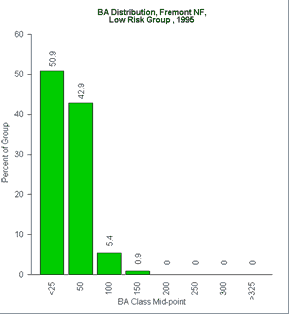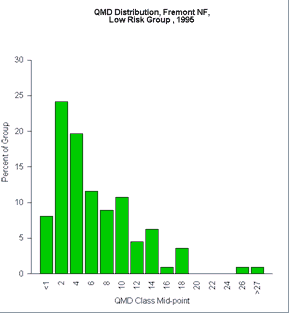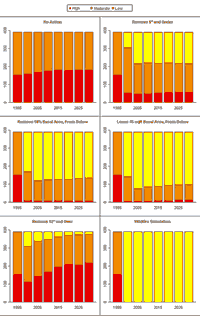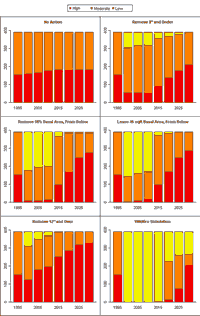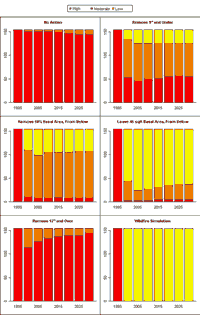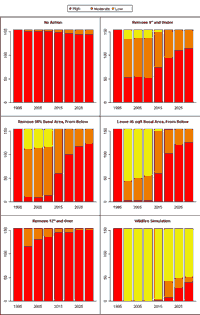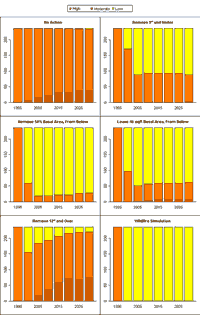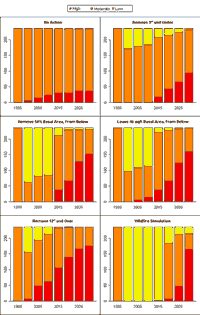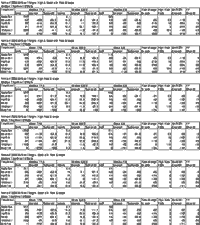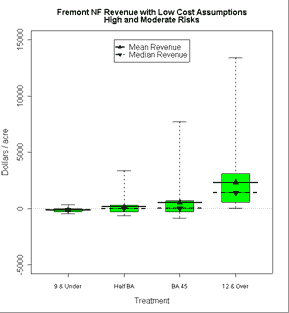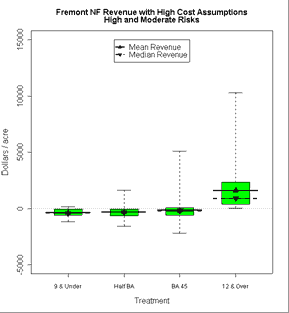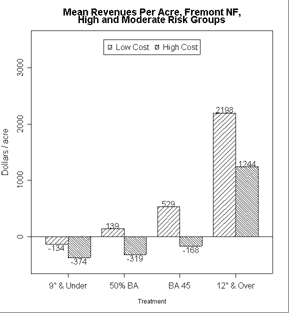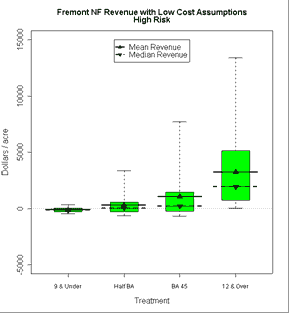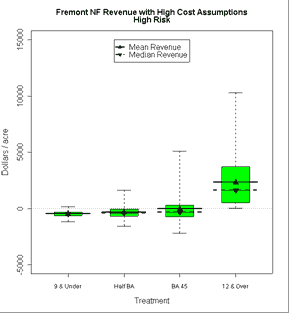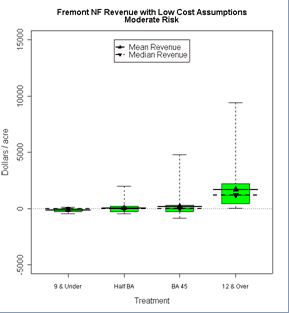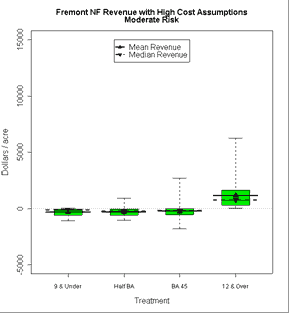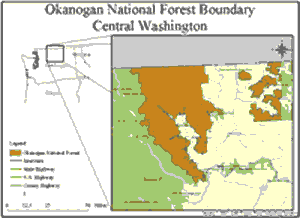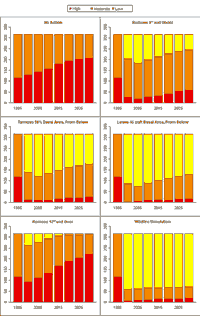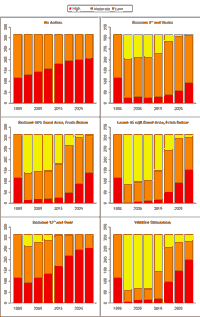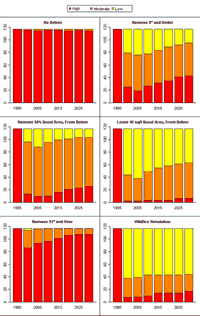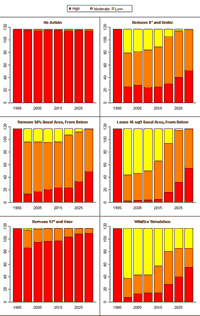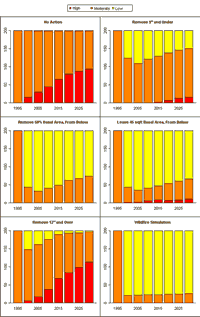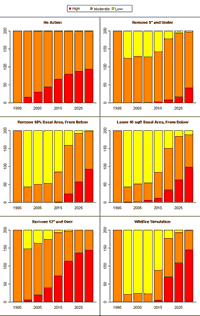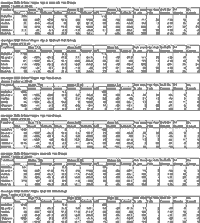 |
 |
 |
 |


Appendix A and B
A: Fremont National Forest Map and Results
B: Okanogan National Forest Map and Results
|
***Return to Investigation of Alternative Fuel Removal Strategies Table of Contents***
Tables
Images
Appendix A: Fremont National Forest Map and Results
Appendix
A Fremont National Forest Map and Results
Fremont National Forest Risk Classes
Fremont: Forest type, Elevation, Basal area, QMD
Fremont: Species, TPA, Canopy structure, Fire risk
Fremont - High Risk Stands: Forest type, Elevation, Basal area, QMD
Fremont - High Risk Stands: Species, TPA, Canopy Structure
Fremont - Moderate Risk Stands: Forest type, Elevation, Basal area, QMD
Fremont - Moderate Risk Stands: Species, TPA, Canopy Structure
Fremont - Low Risk Stands: Forest type, Elevation, Basal area, QMD
Fremont - Low Risk Stands: Species, TPA, Canopy Structure
Fremont - High & Moderate Risk Stands: Fire Risk without regeneration
Fremont - High & Moderate Risk Stands: Fire Risk with regeneration
Fremont - High Risk Stands: Fire Risk without regeneration
Fremont - High Risk Stands: Fire Risk with regeneration
Fremont - Moderate Risk Stands: Fire Risk without regeneration
Fremont - Moderate Risk Stands: Fire Risk with regeneration
Fremont - Fire Risk Reduction Metrics
Fremont - High & Moderate Risk Stands: Economics, Low & High Costs
Fremont - High Risk & Moderate Risk Stands: Economics, Low & High Cost
Appendix B: Okanogan National Forest Map and ResultsAppendix B: Okanogan National Forest Map and Results |
| Risk Class |
Stands
|
Percent
|
| High Risk |
117
|
28.33
|
| Moderate Risk |
200
|
48.43
|
| Low Risk |
96
|
23.24
|
| Total |
413
|
|
Okanogan: Forest type, Elevation, Basal area, QMD
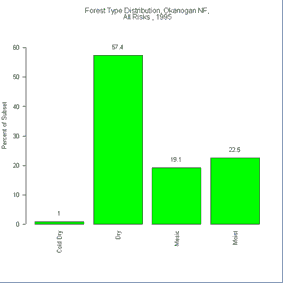 |
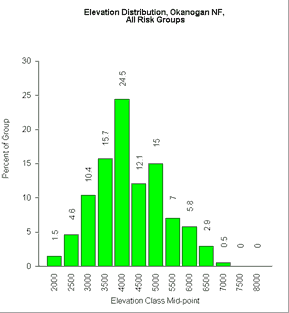 |
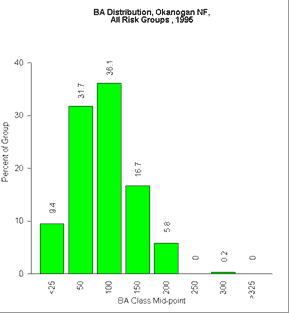 |
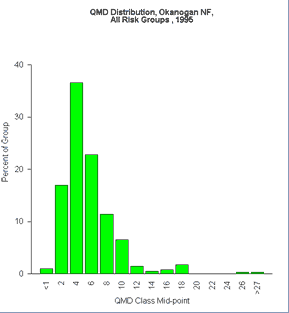 |
Okanogan: Species, TPA, Canopy structure, Fire risk
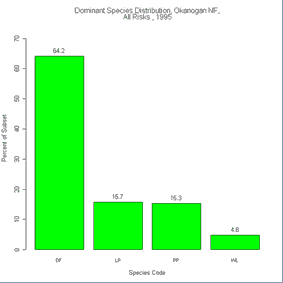 |
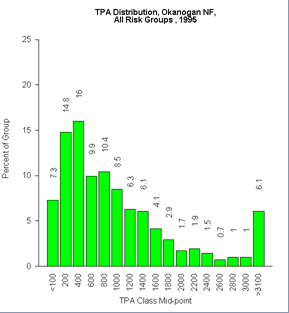 |
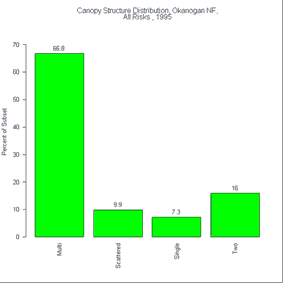 |
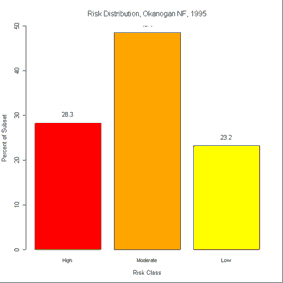 |
Okanogan - High Risk Stands: Forest type, Elevation, Basal area, QMD
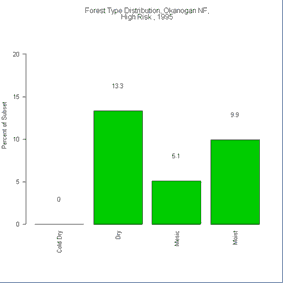 |
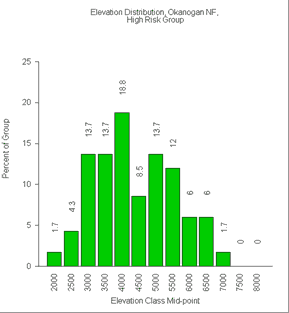 |
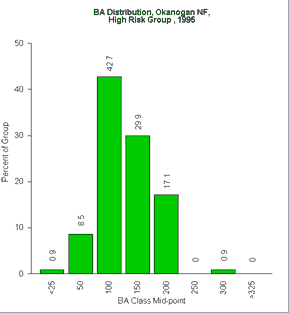 |
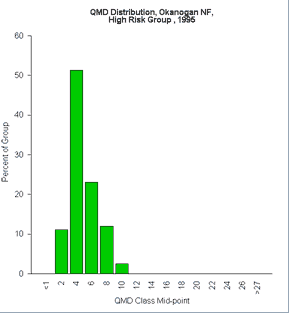 |
Okanogan - High Risk Stands: Species, TPA, Canopy Structure
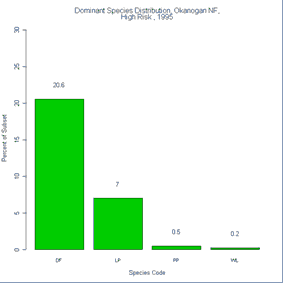 |
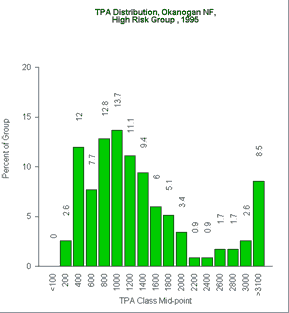 |
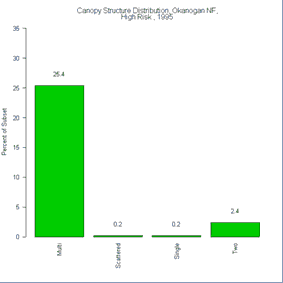 |
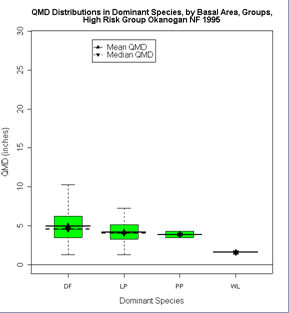 |
Okanogan - Moderate Risk Stands: Forest type, Elevation, Basal area, QMD
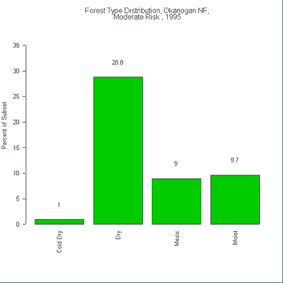 |
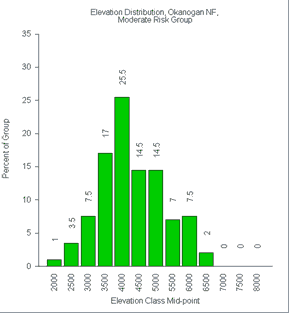 |
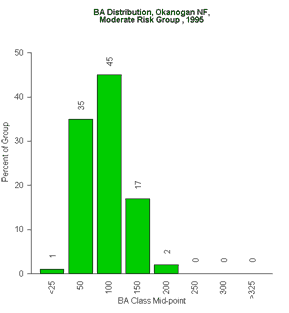 |
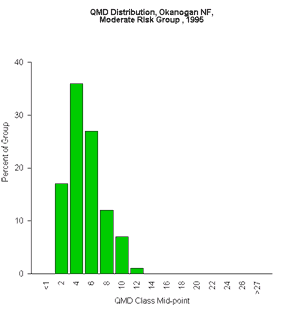 |
Okanogan - Moderate Risk Stands: Species, TPA, Canopy Structure
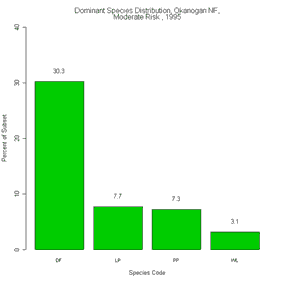 |
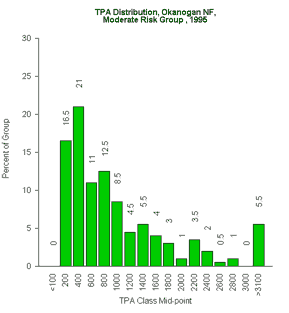 |
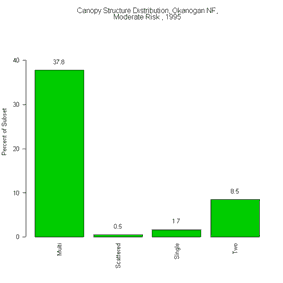 |
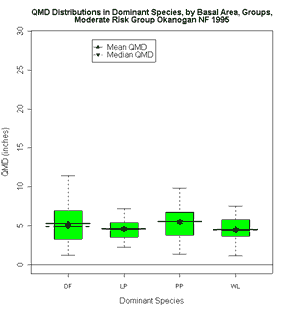 |
Okanogan - Low Risk Stands: Forest type, Elevation, Basal area, QMD
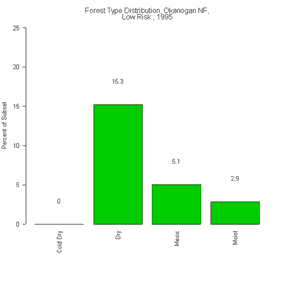 |
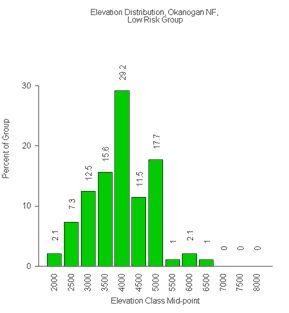 |
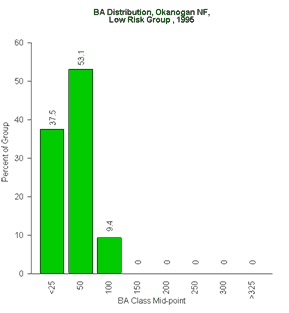 |
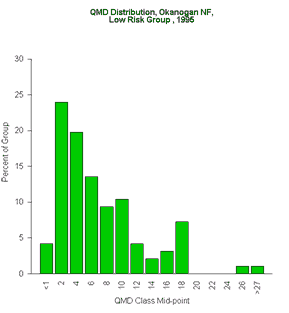 |
Okanogan - Low Risk Stands: Species, TPA, Canopy Structure
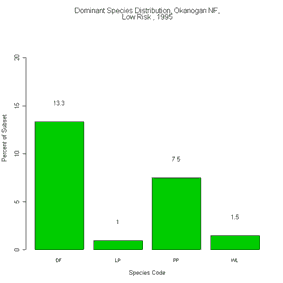 |
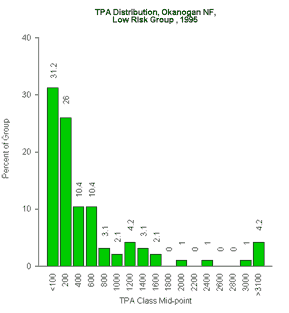 |
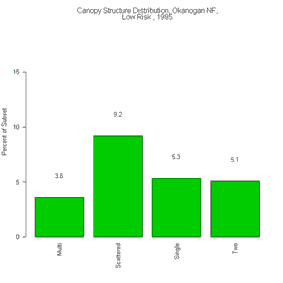 |
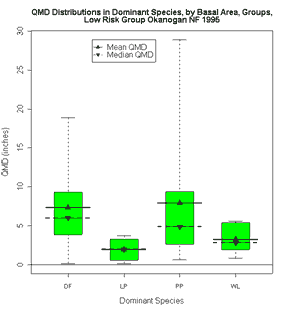 |
Okanogan - High & Moderate Risk Stands: Fire Risk without regeneration
Okanogan - High & Moderate Risk Stands: Fire Risk with regeneration
Okanogan - High Risk Stands: Fire Risk without regeneration
Okanogan - High Risk Stands: Fire Risk with regeneration
Okanogan - Moderate Risk Stands: Fire Risk without regeneration
Okanogan - Moderate Risk Stands: Fire Risk with regeneration
Okanogan - Fire Risk Reduction Metrics
Okanogan - High & Moderate Risk Stands: Economics, Low & High Cost
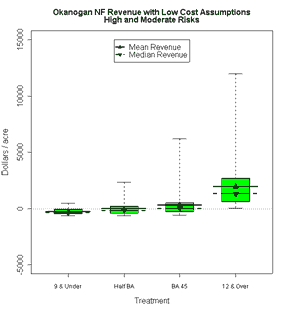 |
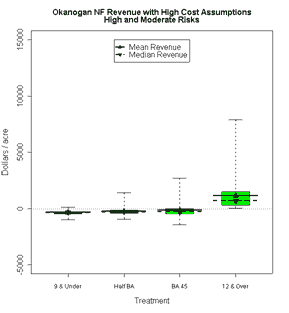 |
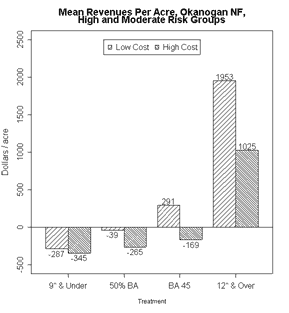 |
Okanogan - High Risk & Moderate Risk Stands: Economics, Low & High Cost
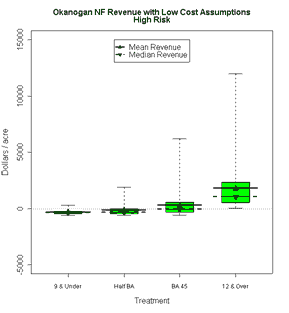 |
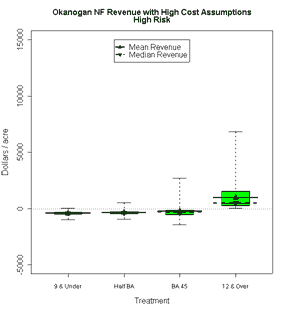 |
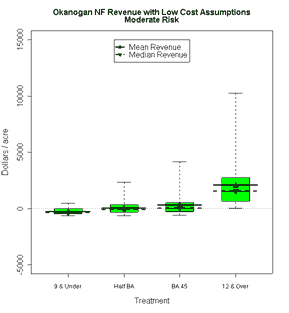 |
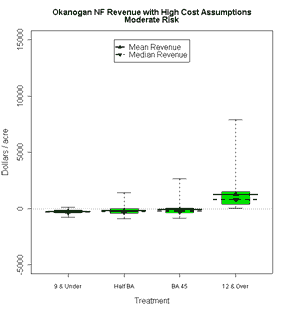 |

